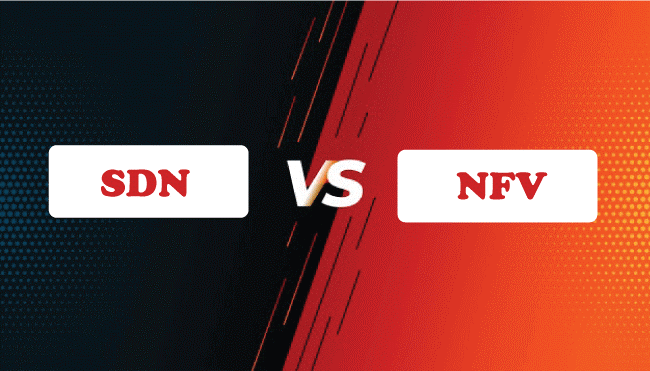Software Defined Networking (SDN) vs. Network Function Virtualization (NFV)Introduction to SDNSoftware-defined networking (SDN) is a new networking paradigm that separates the network's control and data planes. The traditional networking architecture has a tightly coupled relationship between the data and control planes. This means that network devices, such as routers and switches, are responsible for forwarding packets and determining how the network should operate. With SDN, the control plane is decoupled from the data plane and implemented in software, allowing for centralized network control. The control plane, also called the network controller, is responsible for making decisions about how traffic should be forwarded, based on the overall network policy. The data plane, on the other hand, is responsible for forwarding traffic based on the decisions made by the control plane. In SDN, network devices are called switches, and they are typically simple, low-cost devices that forward traffic based on the instructions received from the network controller. The controller communicates with the switches using a standard protocol, such as OpenFlow, which allows the controller to program the switches to forward traffic in a particular way. Introduction to NFVNetwork functions virtualization (NFV) is an approach to network architecture that involves replacing dedicated network hardware devices with software-based virtualized network functions (VNFs) that run on standard servers, storage, and switches. In traditional networking, specialized hardware devices such as routers, firewalls, and load balancers are used to perform specific network functions. With NFV, these functions are virtualized and can be run as software on commodity hardware, leading to greater flexibility, scalability, and cost-effectiveness. NFV enables network operators to quickly and easily deploy and scale network functions as needed without the need for physical hardware installation or maintenance. By virtualizing network functions, operators can also reduce their capital and operational expenditures and increase their network agility, flexibility, and scalability. NFV is often used in conjunction with software-defined networking (SDN), another approach to network architecture that separates the control plane and data plane of the network, allowing for centralized network management and orchestration. Together, NFV and SDN enable network operators to build more agile and efficient networks that can adapt to changing business and user requirements. Difference between SDN and NFV:Software-defined networking (SDN) and network functions virtualization (NFV) are both technologies that aim to improve network agility, flexibility, and efficiency. While there is some overlap between these two concepts, there are also some important differences. Here are some key differences between SDN and NFV: 
CONCLUSION:Overall, while there is some overlap between SDN and NFV, these technologies have different goals and approaches. SDN is primarily focused on traffic flow management and control, while NFV is focused on virtualizing network functions to enable more flexible and efficient network architectures. Both technologies can be used together to create highly dynamic and programmable networks that can adapt to changing business and user requirements. SDN and NFV are complementary technologies that can be used together to create more flexible, scalable, and efficient network architectures. While there are some differences between these technologies, they both share a common goal of enabling more agile and adaptable networks that can support the evolving needs of modern businesses and users.
Next TopicVirtual Circuits vs Datagram Networks
|
 For Videos Join Our Youtube Channel: Join Now
For Videos Join Our Youtube Channel: Join Now
Feedback
- Send your Feedback to [email protected]
Help Others, Please Share










